Puff pastry, known as pâte feuilletée in French, is a type of laminated dough used to create light, flaky pastries. It is made by layering dough and butter in a way that, during baking, the water in the butter turns into steam and separates the layers, causing the pastry to puff up. This unique structure gives puff pastry its signature light and airy texture. Unlike other doughs, puff pastry doesn’t rely on yeast, baking powder, or any chemical leavening agents. Its rise comes solely from the steam generated by the moisture in the dough and butter, making it both an art and a science to prepare.
The process of making puff pastry involves multiple rounds of folding and rolling, often referred to as “turns.” Each turn doubles the layers, eventually resulting in hundreds of ultra-thin layers within the dough. Because of this, puff pastry is considered a highly technical dough, requiring precision and care at every step. It must stay cold throughout the process to prevent the butter from melting into the dough, as distinct layers are crucial for the desired puff and texture.
Puff pastry is incredibly versatile and forms the foundation of many well-known recipes in both savory and sweet categories. It is used to make dishes such as croissants, vol-au-vents, beef Wellington, mille-feuille, and fruit tarts. Whether filled with custards or topped with meats and cheeses, puff pastry delivers both a delicate crunch and a melt-in-your-mouth softness that enhances any dish it complements. While challenging to make from scratch, the result is a buttery, flaky pastry that is far superior to store-bought alternatives.
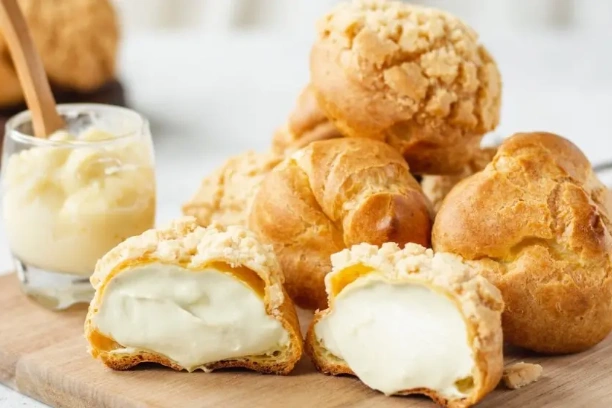
What are the benefits of Puff Pastry?
One of the key benefits of puff pastry is the unique texture puff pastry provides. Its light, flaky layers create a pleasant contrast to creamy, rich fillings, elevating the overall eating experience. For example, in a tart or pie, the crispness of the puff pastry balances the softness of the filling, preventing the dish from becoming too heavy. Similarly, in savory recipes, it adds a delicate crunch that complements ingredients like cheese, vegetables, and meat.
Puff pastry also offers the benefit of visual appeal. When baked, it develops a beautiful golden-brown color and puffs up dramatically, giving your dishes a professional, bakery-quality look. Whether you’re hosting a dinner party or preparing an everyday meal, puff pastry-based dishes are sure to impress guests. The intricate layering makes even simple recipes appear elaborate, making it a great choice when you want to add sophistication without overly complex preparation.
Finally, making puff pastry from scratch gives you control over the ingredients. Store-bought options often contain preservatives, artificial flavors, or hydrogenated oils. By making it yourself, you can choose high-quality butter and flour, resulting in a healthier, more flavorful product. This not only enhances the taste but also caters to dietary needs if you prefer organic or specific types of ingredients. Mastering homemade puff pastry can elevate your cooking skills and provide a sense of accomplishment as you craft a pastry that’s fresh, flavorful, and tailored to your preferences.
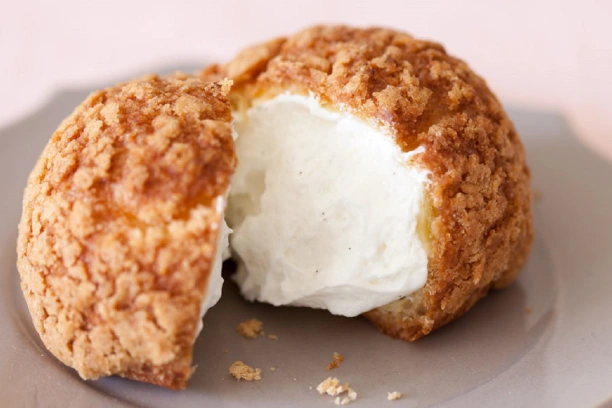
Welcome To My Kitchen! Let’s Make Puff Pastry!
Step1: Prepare the Dough Base
In a large bowl, combine the flour and salt. Cut ¼ of the butter into small cubes and rub it into the flour until it resembles breadcrumbs. Slowly add the cold water and mix until a rough dough forms. Wrap the dough in plastic wrap and chill for 30 minutes.

Step2: Prepare the Butter Block
Shape the remaining ¾ cup (170g) butter into a rectangle about 5×8 inches by flattening it between two sheets of parchment paper. Chill the butter block until firm but pliable, about 20-30 minutes.

Step3: Roll and Fold (First Turn)
On a lightly floured surface, roll the dough into a rectangle approximately 10×16 inches. Place the butter block in the center and fold the dough over it like a letter. Roll it out gently into another rectangle. Fold it into thirds again, wrap, and chill for 30 minutes.

Step4: Repeat the Rolling and Folding
Repeat the rolling and folding process five more times, ensuring the dough stays cold between each turn. After the final fold, chill the dough for at least 1 hour before using.

Step5: Bake Your Pastry
Preheat the oven to 400°F (200°C). Roll out the dough to your desired thickness, cut into shapes, and bake for 15-20 minutes or until golden brown and puffed.

Puff pastry is a rewarding challenge that elevates your baking skills and opens the door to countless creative possibilities. Whether you’re crafting a savory appetizer or a delicate dessert, the buttery layers and flaky texture of homemade puff pastry add a touch of sophistication to any dish. While the process requires patience and precision, the result is well worth the effort—each bite delivering crisp, airy perfection. Once you’ve mastered this recipe, you’ll find endless ways to use it, and you’ll appreciate the superior quality that comes from making it from scratch. Happy baking, and may your pastry puff beautifully!
Print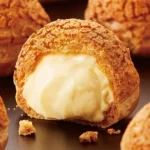
Puff Pastry
- Total Time: 4 hours (including chilling)
- Yield: 6-8 servings 1x
- Diet: Low Salt
Description
Puff pastry is a light, flaky dough that rises impressively when baked, thanks to the many layers of butter and dough. This classic French pastry is the foundation for countless recipes, ranging from savory tarts and turnovers to sweet treats like mille-feuille and palmiers. While store-bought puff pastry is convenient, making it from scratch delivers a superior texture and flavor. The process requires patience and precision but yields a perfectly buttery, crisp pastry with an irresistible, airy bite.
Ingredients
- 2 ½ cups (300g) all-purpose flour
- 1 tsp salt
- 1 cup (225g) cold unsalted butter, divided
- ¾ cup (180ml) cold water
Instructions
Step1: Prepare the Dough Base
In a large bowl, combine the flour and salt. Cut ¼ of the butter into small cubes and rub it into the flour until it resembles breadcrumbs. Slowly add the cold water and mix until a rough dough forms. Wrap the dough in plastic wrap and chill for 30 minutes.
Step2: Prepare the Butter Block
Shape the remaining ¾ cup (170g) butter into a rectangle about 5×8 inches by flattening it between two sheets of parchment paper. Chill the butter block until firm but pliable, about 20-30 minutes.
Step3: Roll and Fold (First Turn)
On a lightly floured surface, roll the dough into a rectangle approximately 10×16 inches. Place the butter block in the center and fold the dough over it like a letter. Roll it out gently into another rectangle. Fold it into thirds again, wrap, and chill for 30 minutes.
Step4: Repeat the Rolling and Folding
Repeat the rolling and folding process five more times, ensuring the dough stays cold between each turn. After the final fold, chill the dough for at least 1 hour before using.
Step5: Bake Your Pastry
Preheat the oven to 400°F (200°C). Roll out the dough to your desired thickness, cut into shapes, and bake for 15-20 minutes or until golden brown and puffed.
Equipment
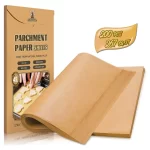
200 Pcs Unbleached Parchment Paper Baking Sheets
Buy Now →
Belwares Mixing Bowls with Lids Set
Buy Now → Buy Now →
Buy Now → 
COOK WITH COLOR Mixing Bowls with Lids
Buy Now →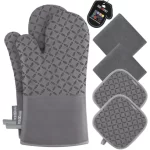
KEGOUU Oven Mitts and Pot Holders
Buy Now →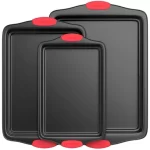
NutriChef 3-Piece Nonstick Kitchen Oven Baking Pans
Buy Now →Notes
- Keep the dough and butter as cold as possible to maintain the distinct layers. If the dough becomes warm, refrigerate it before proceeding.
- Use a light hand when rolling to avoid pressing the layers together too much, which can prevent the pastry from puffing.
- Rotate the dough 90 degrees after each roll-and-fold session to ensure even puffing.
- Bake puff pastry on parchment paper to prevent sticking, and place a baking sheet on top if you want evenly flat pastries.
- Prep Time: 1 hour
- Cook Time: 20 minutes
- Category: Stress-Busting

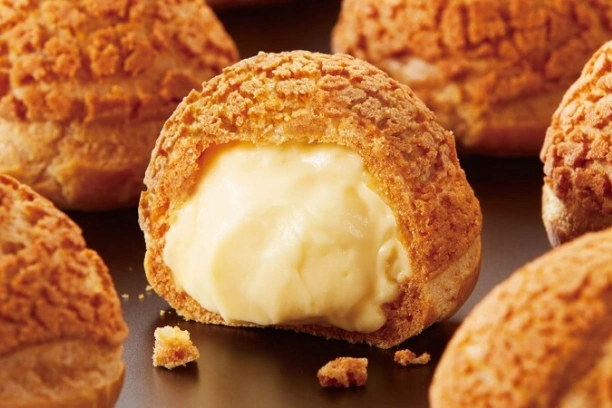
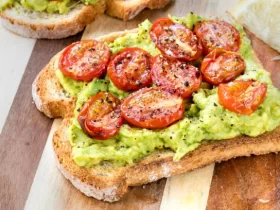

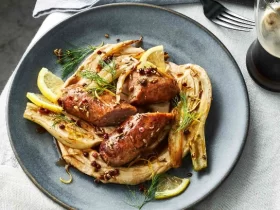
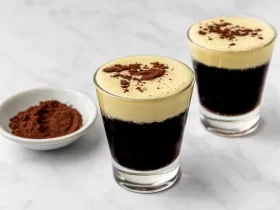
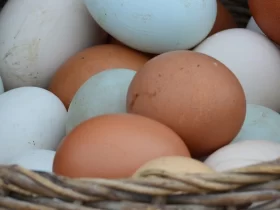
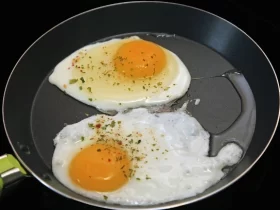
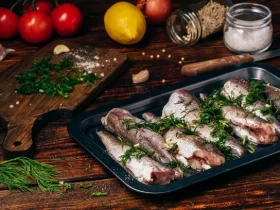
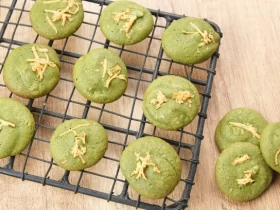
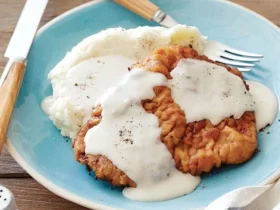
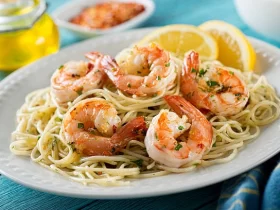



Leave a Reply